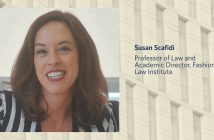Kamille Dean, director of diversity, equity and inclusion at Fordham Law, and Kimathi Gordon-Somers, assistant dean of student affairs and diversity, were quoted in an article by LLM GUIDE discussing how law schools across the country have been doubling down on diversity and inclusion.
Aside from financial barriers, first generation minority students may not have the same access to information, advice and networks as their more privileged peers. Fordham Law in New York supports pipeline programs to help address this disparity.
For example, its IDEAL program (Increasing Diversity in Education and the Law) identifies promising students and exposes them to a rich and dynamic educational curriculum that begins the sophomore year and culminates with graduation from their undergraduate institution. This is seen as a way to build up the pipeline of candidates for the LL.M. program, with a first degree typically a pre-requisite.
Kimathi Gordon-Somers, assistant dean of student affairs and diversity says: “We believe that focusing on increasing access to the legal profession for those who are underrepresented is critical because it ultimately strengthens our justice system.
“A system that does not represent everyone equally is not a fair system, so we need to help ensure people of all backgrounds are able to gain entry into legal education.
“Further, diversity of perspective and thought are an imperative part of interpreting the law. These diverse students will play an important role in creating and interpreting laws that protect marginalized communities.”
Kamille Dean, director of diversity, equity and inclusion at Fordham Law, says the school is also bolstering diversity leadership, supporting peer mentorship, launching new scholarships focused on social justice and civil rights, and re-examining recruitment and admissions to increase the applicant pool of diverse candidates for the LL.M. program.
“We need to stay the course, continually assess our progress, and maintain a level of urgency to address these important issues,” she says. “A critical component is staying in close touch with students, faculty and alumni of color to understand how our efforts are working, or how they might need to be adjusted.”




